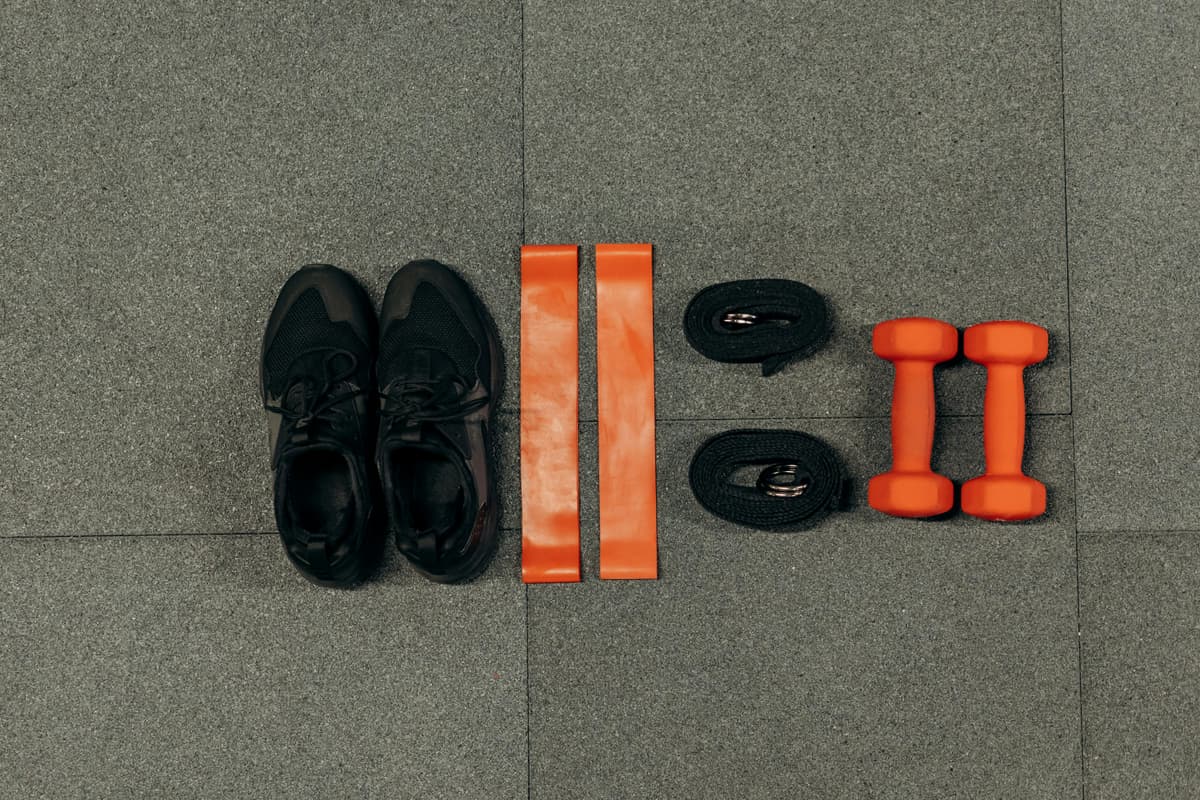
In this post, we will dive into the crucial steps for setting up healthy habits and setting weight-loss goals that actually work. Effective weight-loss goals serve as the cornerstone of triumph or defeat on your journey towards a healthier you. Thoughtfully constructed and achievable goals not only maintain your drive and determination, but also lay a roadmap for embracing a more wholesome lifestyle.
Nevertheless, not all weight-loss goals prove beneficial. Setting unattainable and excessively ambitious goals may inadvertently sabotage your progress. To steer clear of such pitfalls, employ the following guidelines to formulate objectives that propel you towards weight loss goals and enhanced well-being.

Setting realistic goals is at the top of the list of steps for getting to a healthy weight. Weight loss goals can be categorized into two main types: outcome goals and process goals. An outcome goal is the ultimate result you aim to achieve, such as losing a specific amount of weight. However, solely focusing on the outcome may overlook the crucial aspect of how to attain it.
Process goals concentrate on the necessary steps essential for reaching your desired outcome. These goals are about changing behaviors and habits. For instance, committing to consuming five servings of fruits or vegetables daily, engaging in a 30-minute walk each day, or ensuring you drink water with every meal are all examples of process goals. By prioritizing these behavioral changes, you lay down a solid foundation for effective weight loss.
The key is establishing that overarching goal along with a set of specific, attainable objectives that can be broken down into smaller, realistic tasks. This approach makes starting something new less intimidating and more exciting as it allows you to focus on one small task at a time, whether it’s on a monthly, weekly, daily, or even hourly basis.
With this approach in mind, a refreshed and realistic goal for the month can be increasing vegetable intake at dinner and cutting down on heavy carbohydrates in the evening. This focused approach enables steady progress towards the overarching goal without feeling overwhelmed by the magnitude of the task!
This step can be pivotal in maintaining a sustainable fitness routine. Many individuals feel pressured to work out every single day, driven by the belief that intensity and frequency equate to success. However, this mindset can lead to burnout and exhaustion, ultimately resulting in abandonment of their fitness goals altogether. It’s essential to recognize that not all goals are created equal; while consistency is crucial, pushing oneself beyond reasonable limits can have detrimental effects on both physical and mental well-being. Instead of fixating solely on rigorous daily workouts, it’s vital to set balanced goals that prioritize overall health and longevity. Incorporating rest days into the routine allows the body to recover and prevents burnout. Emphasizing variety in workouts can also keep motivation high and reduce the risk of monotony induced fatigue.
When embarking on a weight loss journey, it’s crucial to adhere to the SMART goal-setting framework. This framework is broken down as follows:

In the journey towards weight loss, setbacks are an inevitable aspect of behavior change. It’s a natural part of the process, and virtually everyone who embarks on such a journey encounters obstacles along the way. Rather than being discouraged by setbacks, it’s crucial to anticipate their occurrence and proactively devise strategies to overcome them. This proactive approach can significantly increase the likelihood of maintaining progress and staying committed to your goals.
One effective strategy is to identify potential roadblocks in advance. Whether it’s a tempting holiday meal or a social gathering filled with calorie-rich treats, recognizing these situations allows for better preparation. By pinpointing specific triggers, individuals can develop tailored plans to navigate through challenges successfully. This might involve strategies such as practicing portion control, choosing healthier alternatives, or planning ahead by eating a nutritious meal before attending an event.
Moreover, having a contingency plan in place ensures resilience in the face of setbacks. When setbacks occur, it’s essential to acknowledge them without self-judgment and refocus on the overall goal. By implementing pre-planned strategies and remaining adaptable, individuals can effectively navigate through setbacks, ultimately strengthening their resolve and perseverance in their weight loss journey.
Tracking progress is an effective way to remind yourself of your underlying reasons for wanting to be healthier. Whether it’s to have more energy for playing with your children or simply to feel more confident in your own skin, keeping your motivator visible can serve as a daily encouragement. This could be achieved by setting it as your phone background, hanging a picture on the wall, or placing a motivational phrase by the door or mirror. Having this constant reminder reinforces your commitment and helps you stay focused, especially during challenging times.
Additionally, tracking your progress through a diary, food journal, or mobile app can offer valuable insights into your eating habits, exercise routine, and overall well-being. By recording daily food intake, weight measurements, and feelings of wellness, you gain a clearer understanding of how your behaviors impact your health goals. This awareness allows for adjustments and improvements along the way, ultimately leading to greater success in achieving your weight loss objectives. Visualizing your progress is a way to stay mindful and proactive in your health journey is key to long-term success and well-being.

Finding an exercise routine that brings joy and motivation are essential components of a successful weight loss journey. Rather than pushing yourself to the limit every day, listen to your body’s cues and incorporate rest days into your routine. Investing in your health by finding an exercise regimen that suits your preferences and lifestyle can make a significant difference in your journey. For some, attending group classes may be intimidating, leading to feelings of self-consciousness. In such cases, bringing the workout experience into your own home, like using a Peloton bike or following a YouTube workout program. With live instructor-led classes and a supportive online community, exercising becomes more accessible and enjoyable. The sense of accountability and camaraderie fostered by participating in virtual classes can be a powerful motivator to stay consistent with your workouts, regardless of external factors like weather or time constraints.
Adopting a flexible mindset towards nutrition is crucial for sustainable weight loss. Instead of succumbing to “all-or-nothing” thinking, which can lead to feelings of guilt and derailment from your goals, strive for moderation. Allow yourself the occasional indulgence while ensuring that you maintain balance and prioritize nutrient-dense foods in your diet. When faced with cravings for less healthy options, try implementing diversions like drinking water, snacking on fruit, or taking a short walk to help curb temptation and stay on track. Allow yourself the occasional treat or rest day without guilt, as long as it’s balanced with healthy habits the majority of the time. By embracing moderation in your approach to weight loss, you can create a healthier relationship with food, exercise, and ultimately, yourself.
In addition to mindful eating habits, staying hydrated is paramount for overall health and weight management. By swapping sugary beverages for unsweetened alternatives and committing to a daily water intake goal, you establish a practical and actionable strategy for staying accountable to yourself. Investing in a stylish water bottle and setting reminders to drink throughout the day can help you stay consistent with your hydration goals, fostering a healthier lifestyle and supporting your weight loss journey. Incorporating hydrating foods such as fruits and vegetables into your diet can contribute to your overall fluid intake. Remember that hydration is essential for maintaining overall health and well-being, so prioritize staying hydrated as a fundamental aspect of your weight loss journey. By making hydration a priority, you can optimize your body’s functions and support your efforts towards achieving your weight loss goals.
Remember that setting weight-loss goals is a personal journey, and it’s okay to adapt along the way. Embrace the process with patience and positivity, allowing yourself room for setbacks and adjustments. Keep your motivations visible and celebrate each milestone, no matter how small, as they all contribute to your progress. Moderation is key, so find balance, and don’t forget to indulge in activities that bring you joy. With dedication, resilience, and a focus on overall well-being, you’re well-equipped to achieve your weight-loss goals and cultivate a healthier, happier lifestyle. Keep going, you’ve got this!